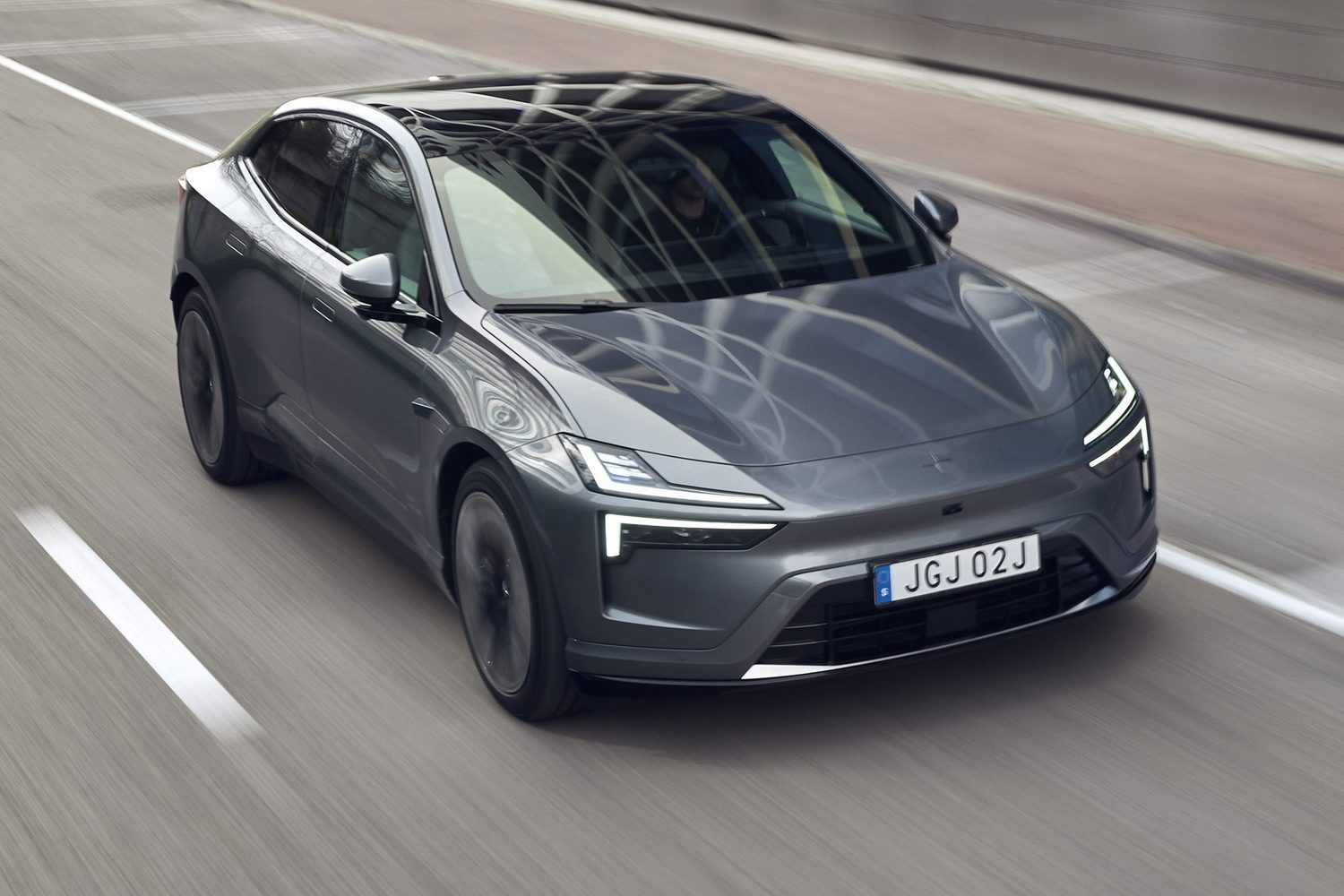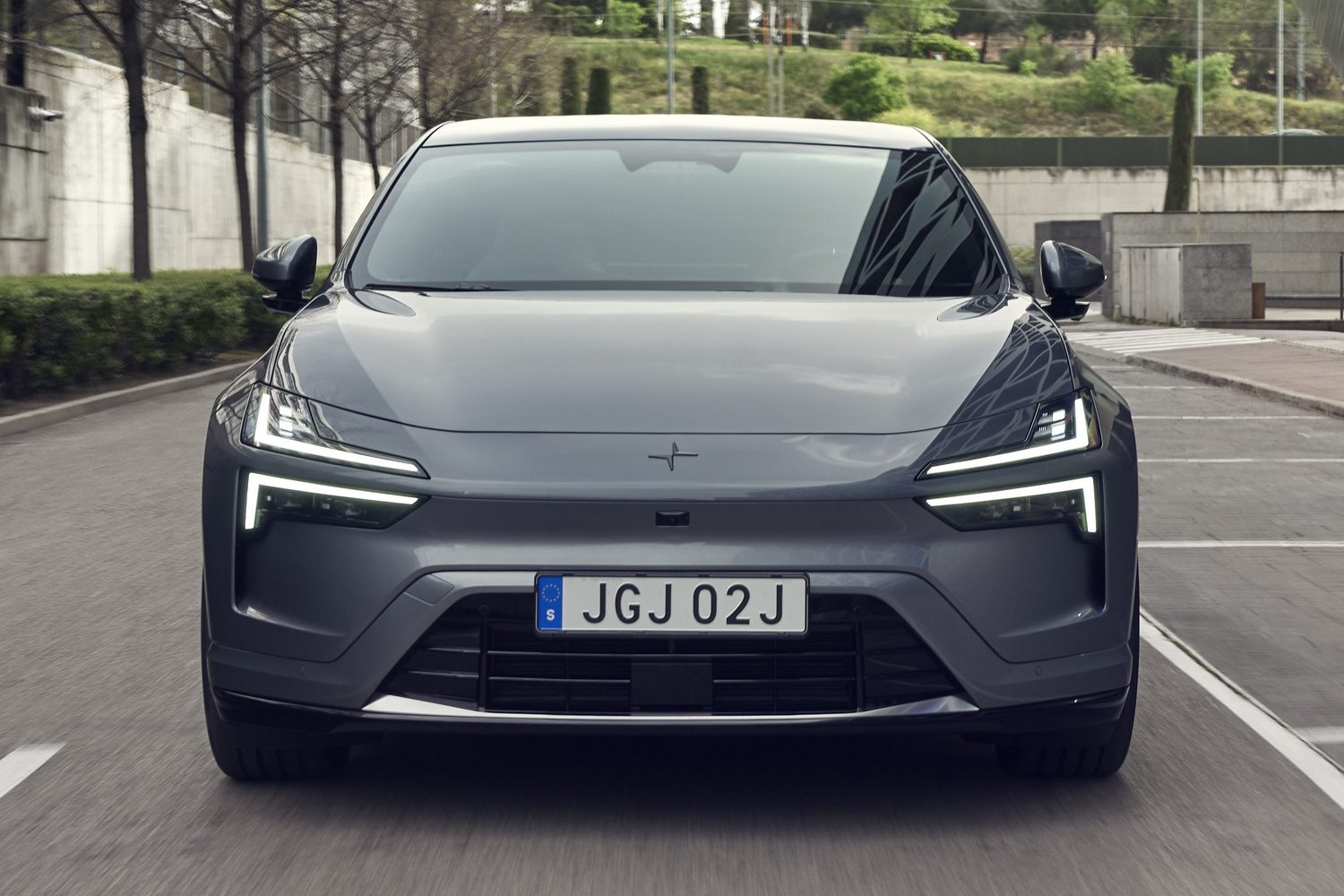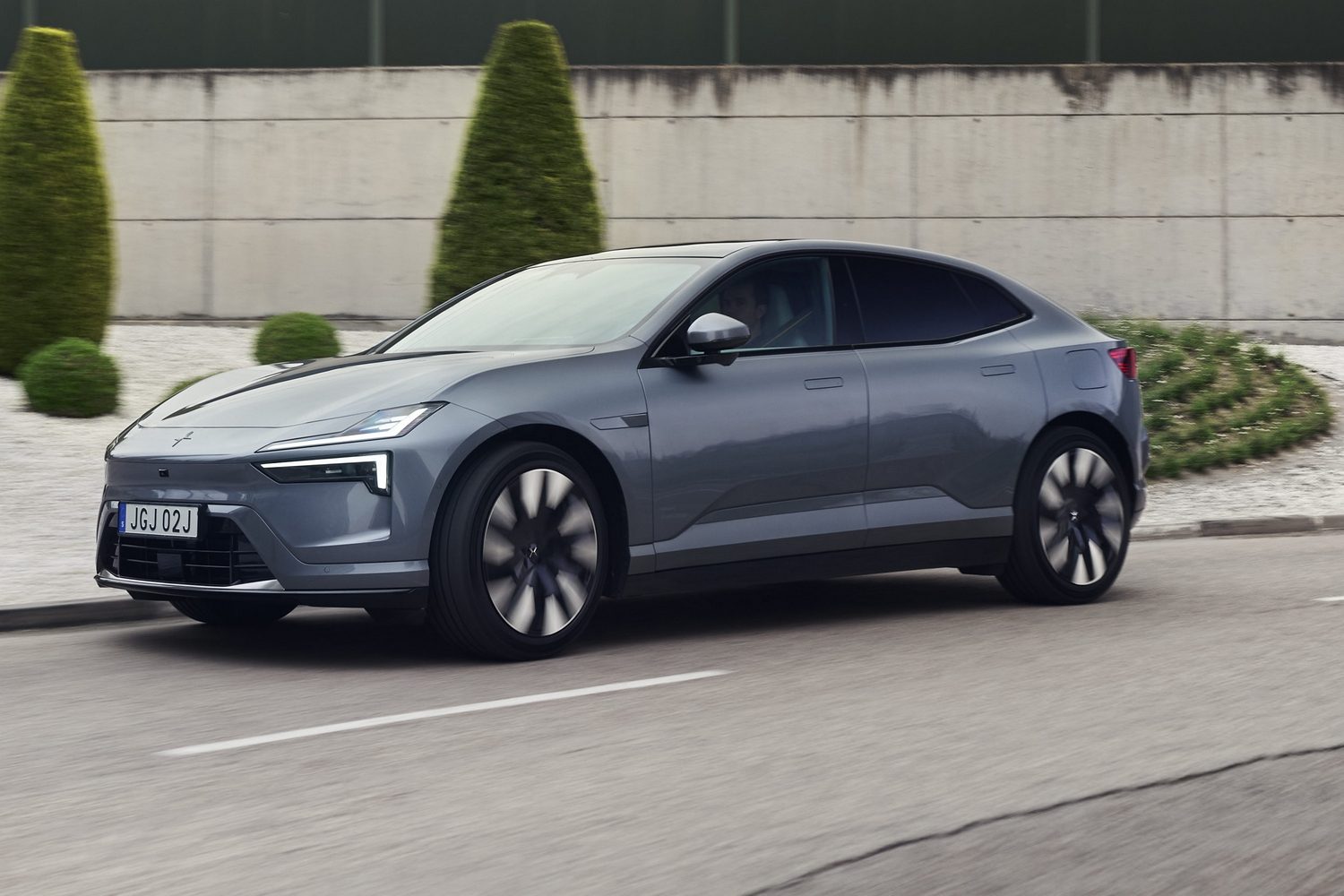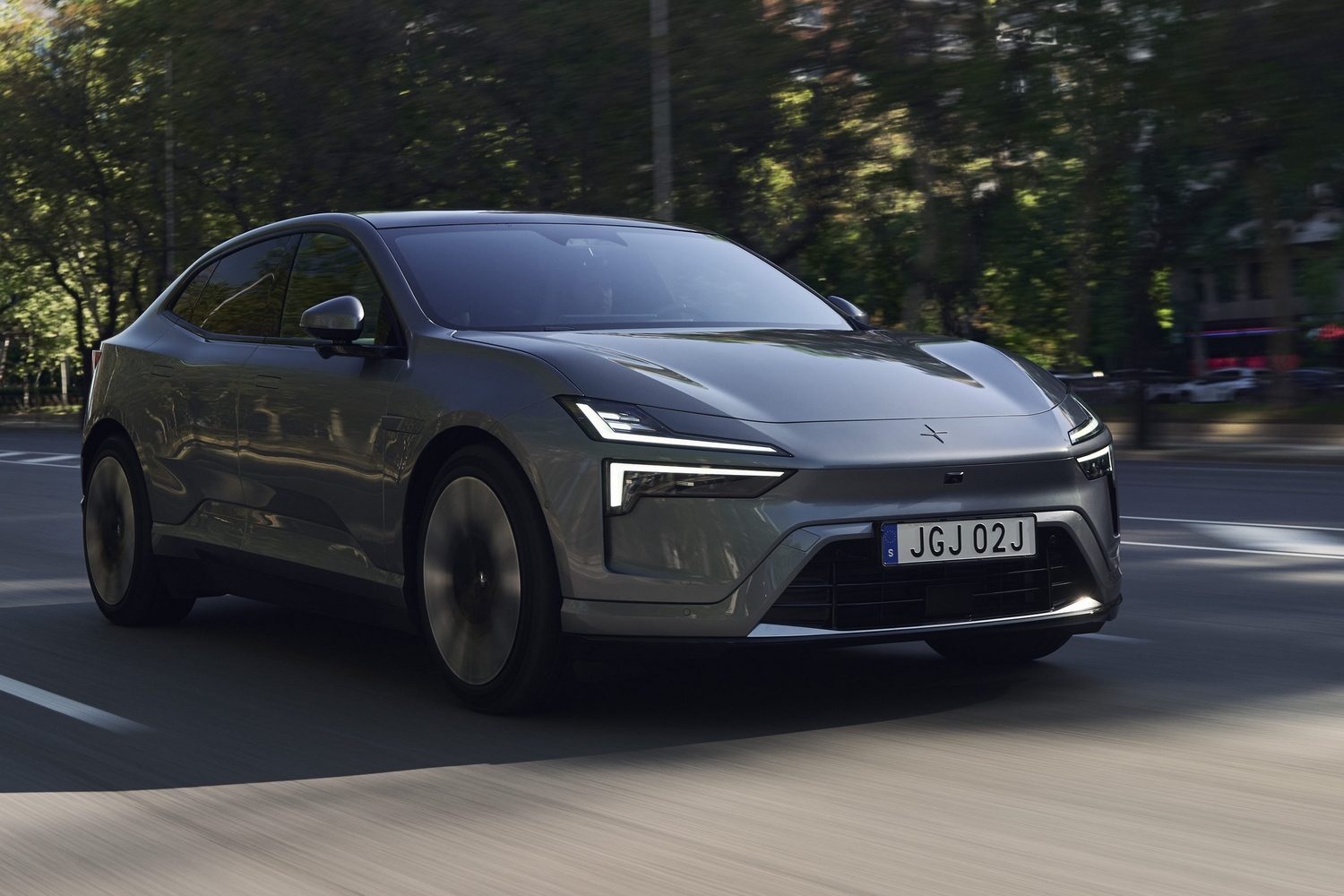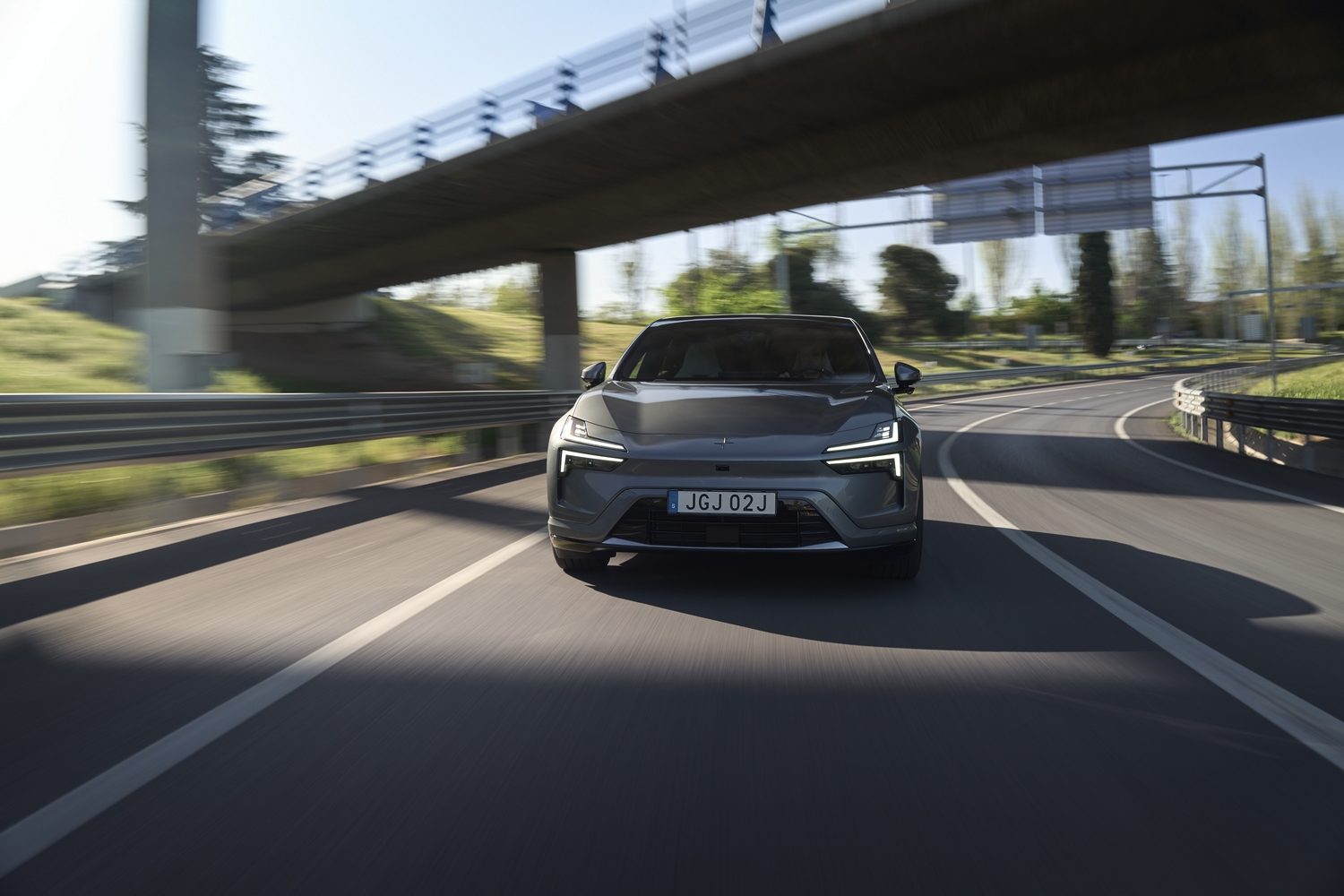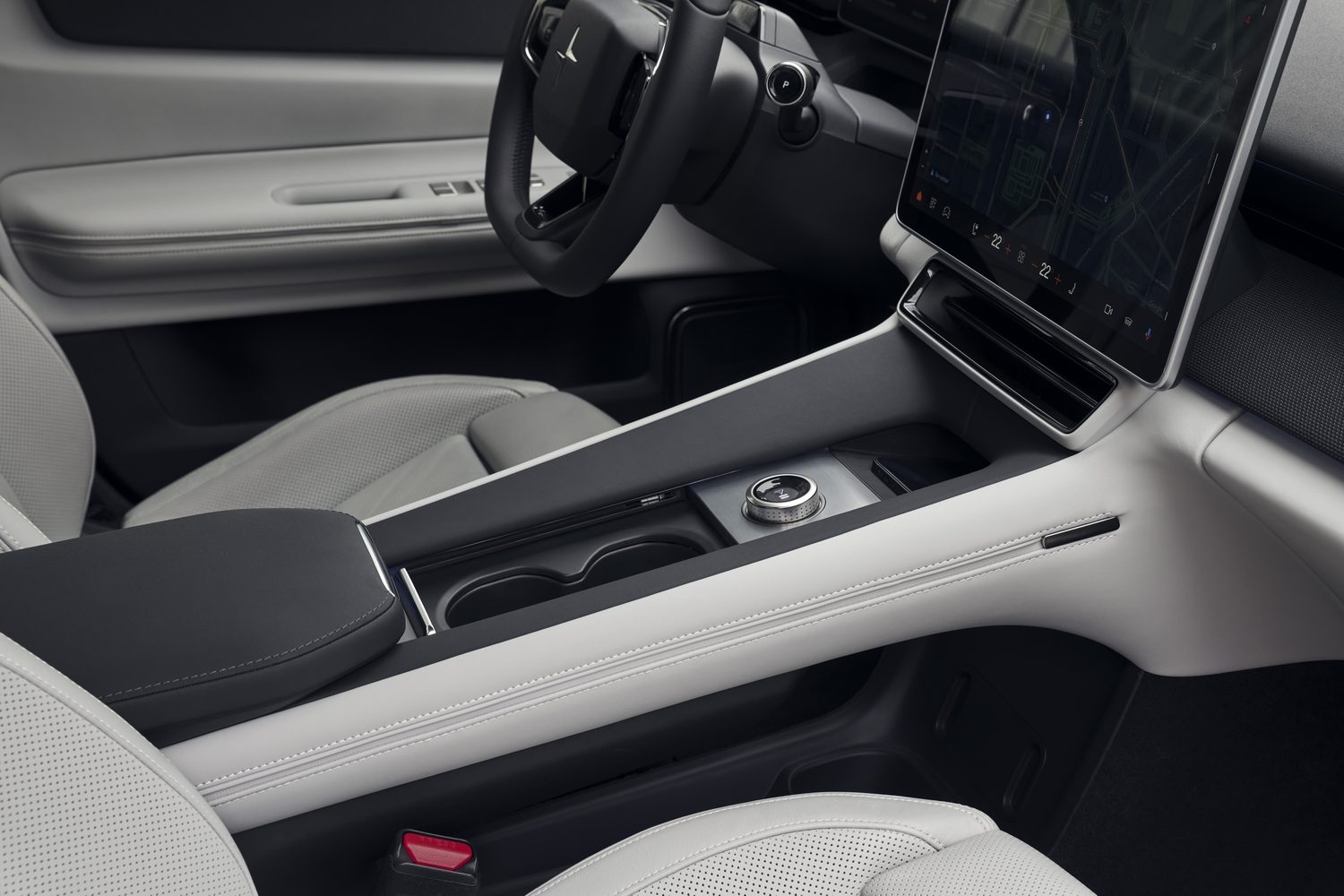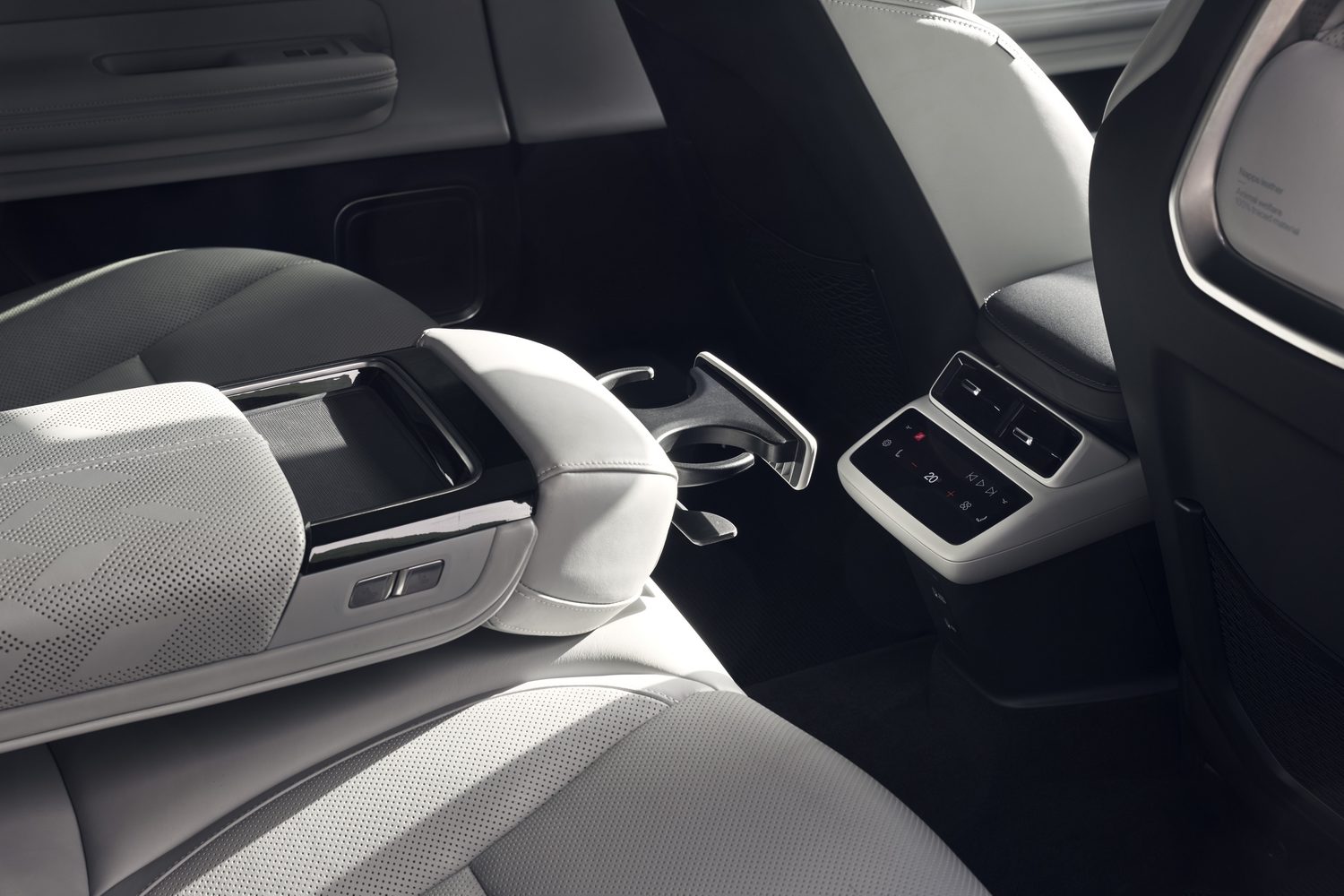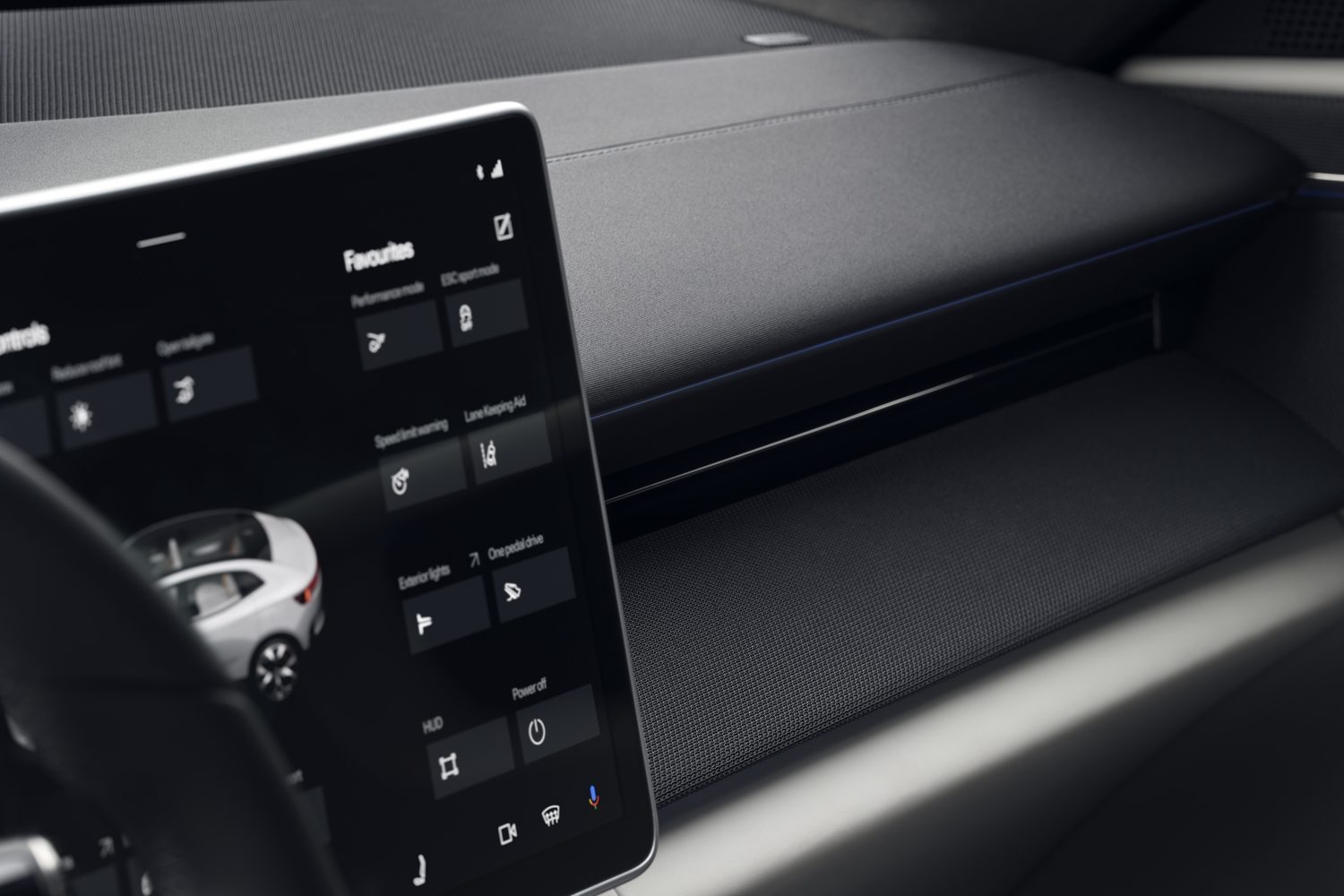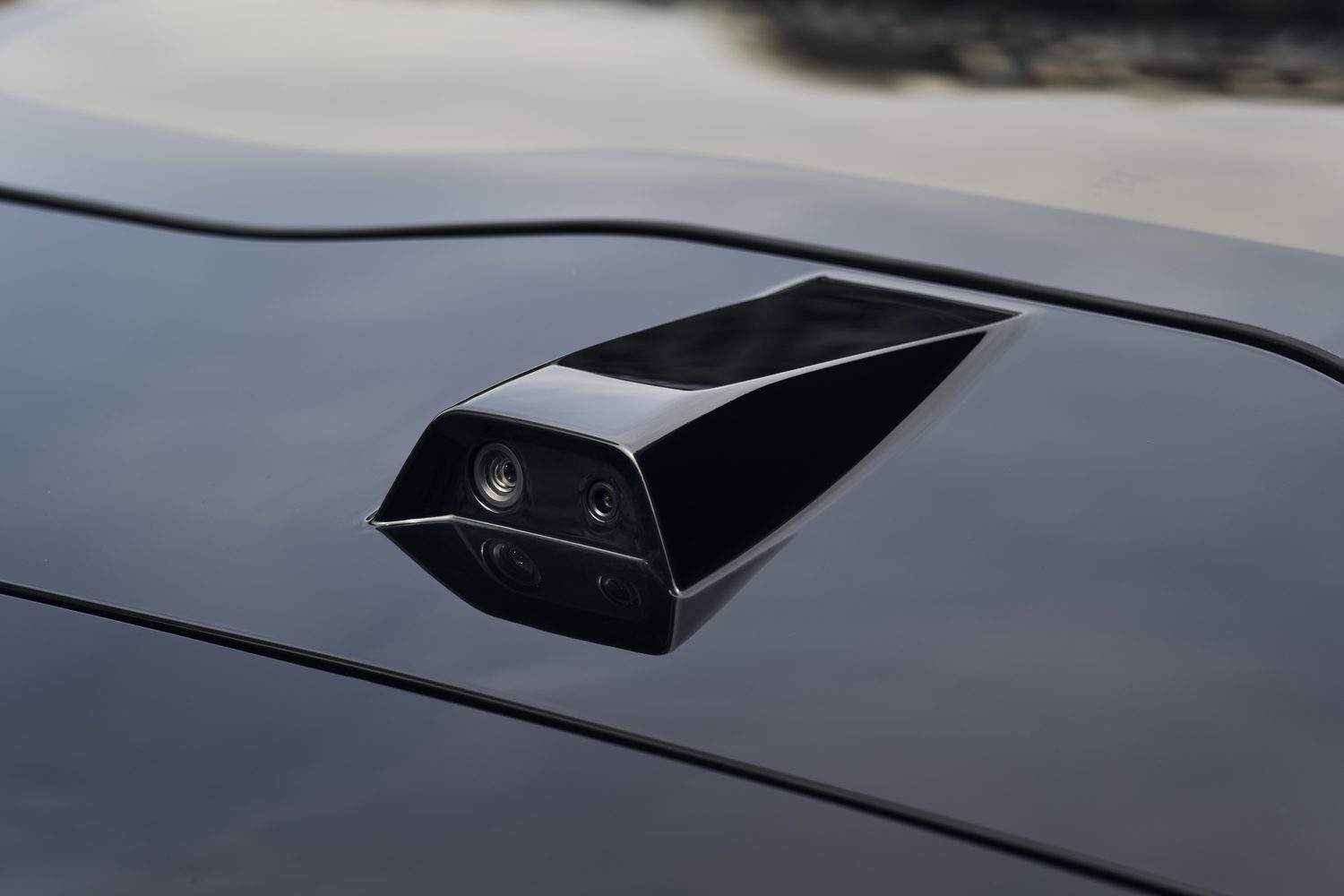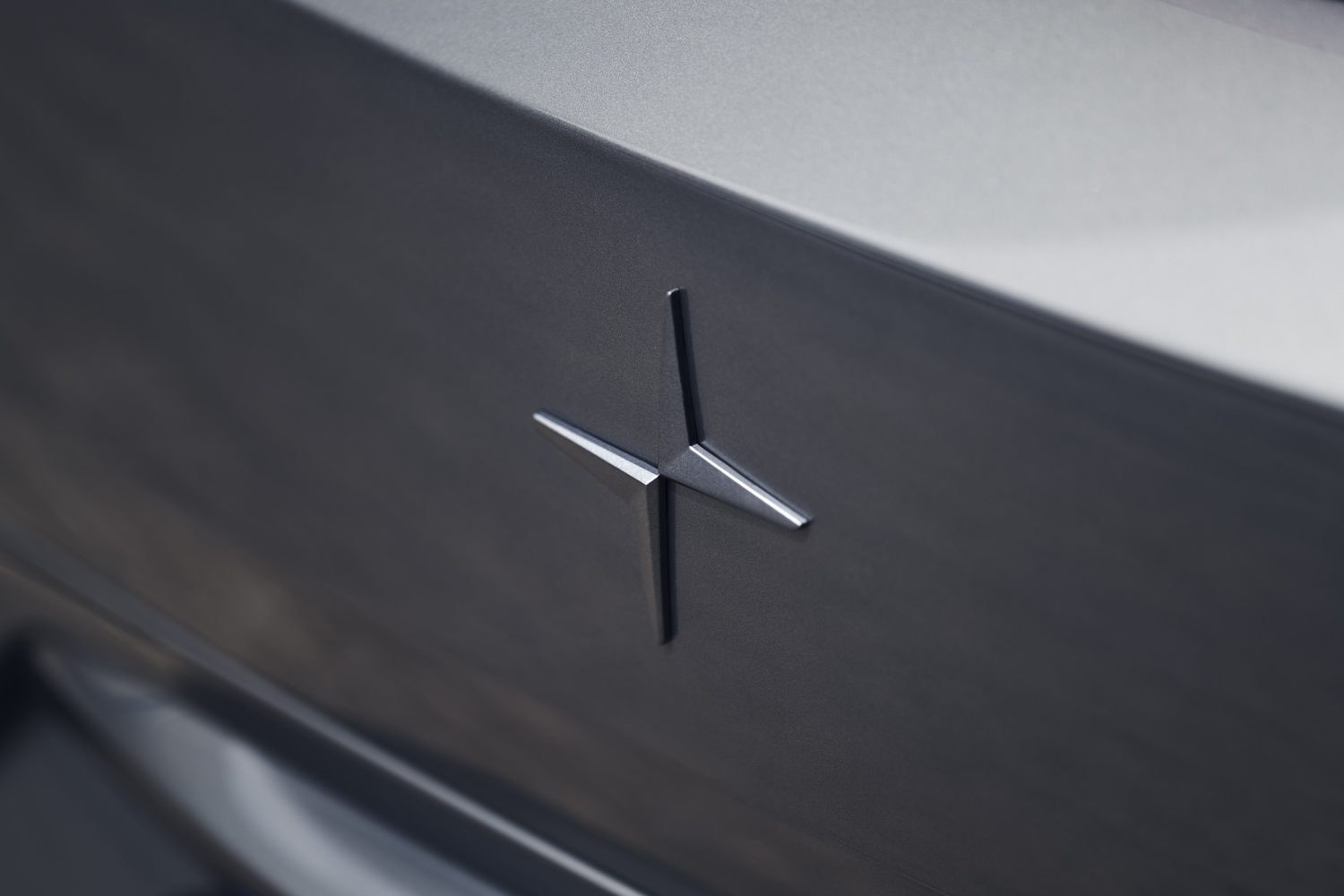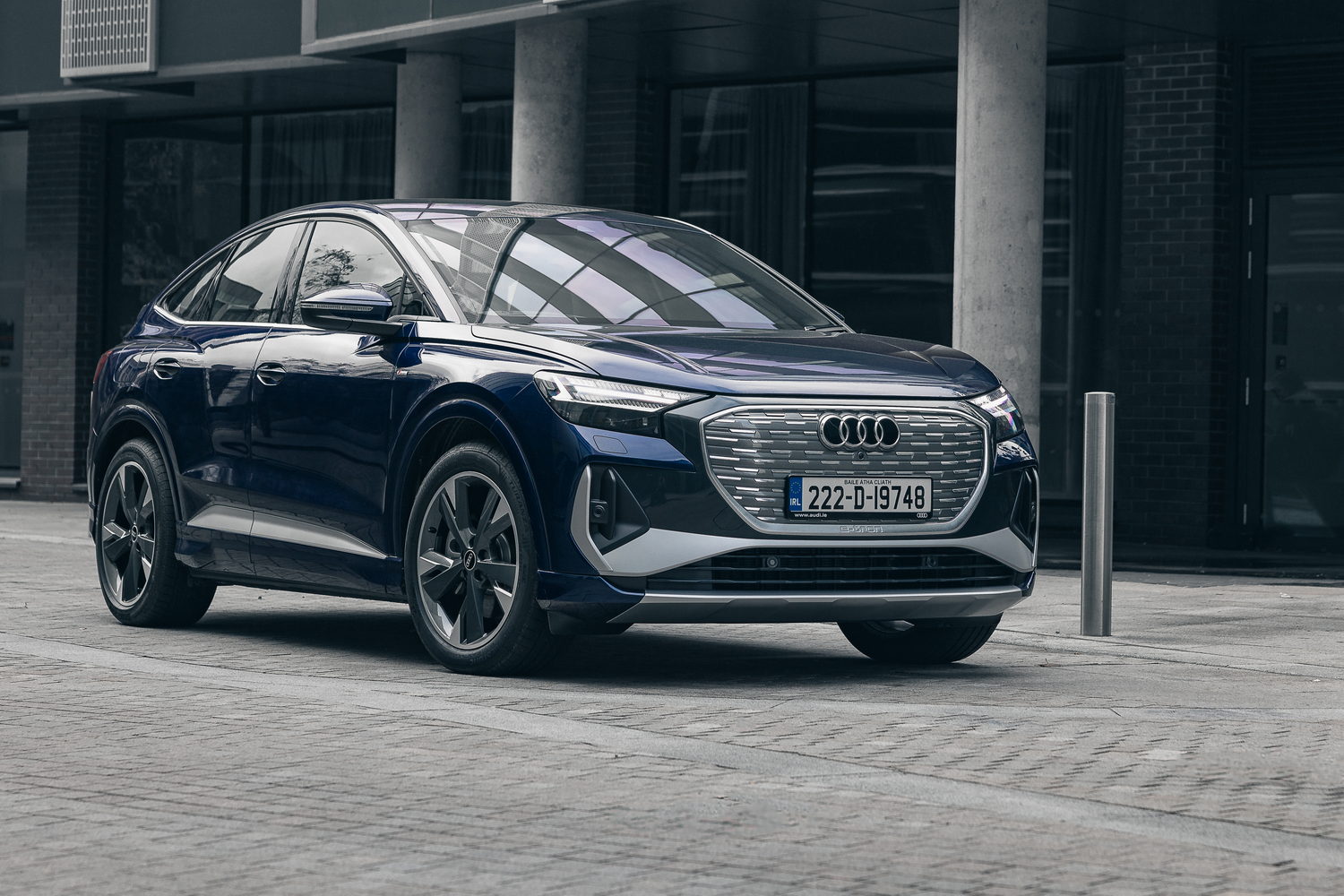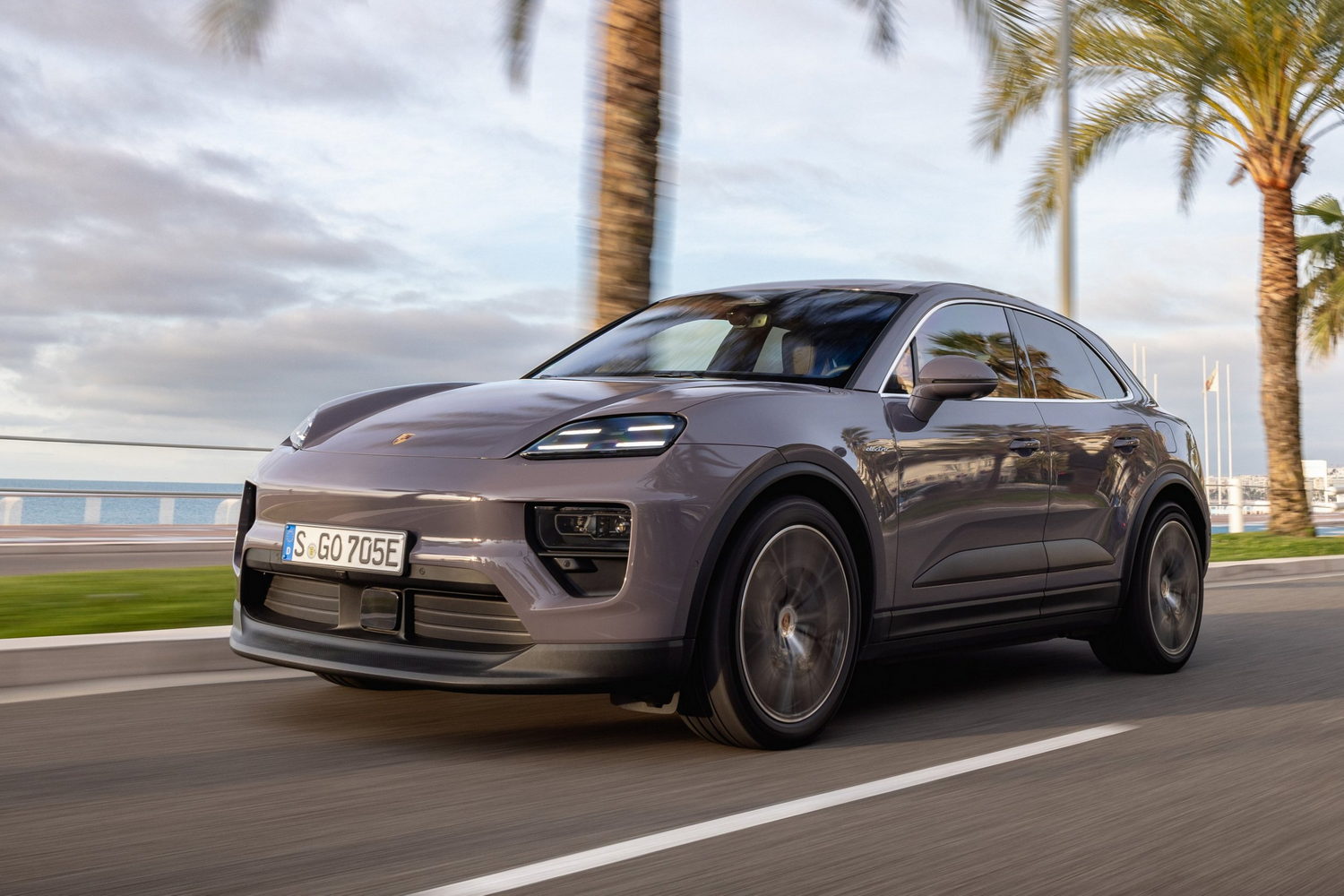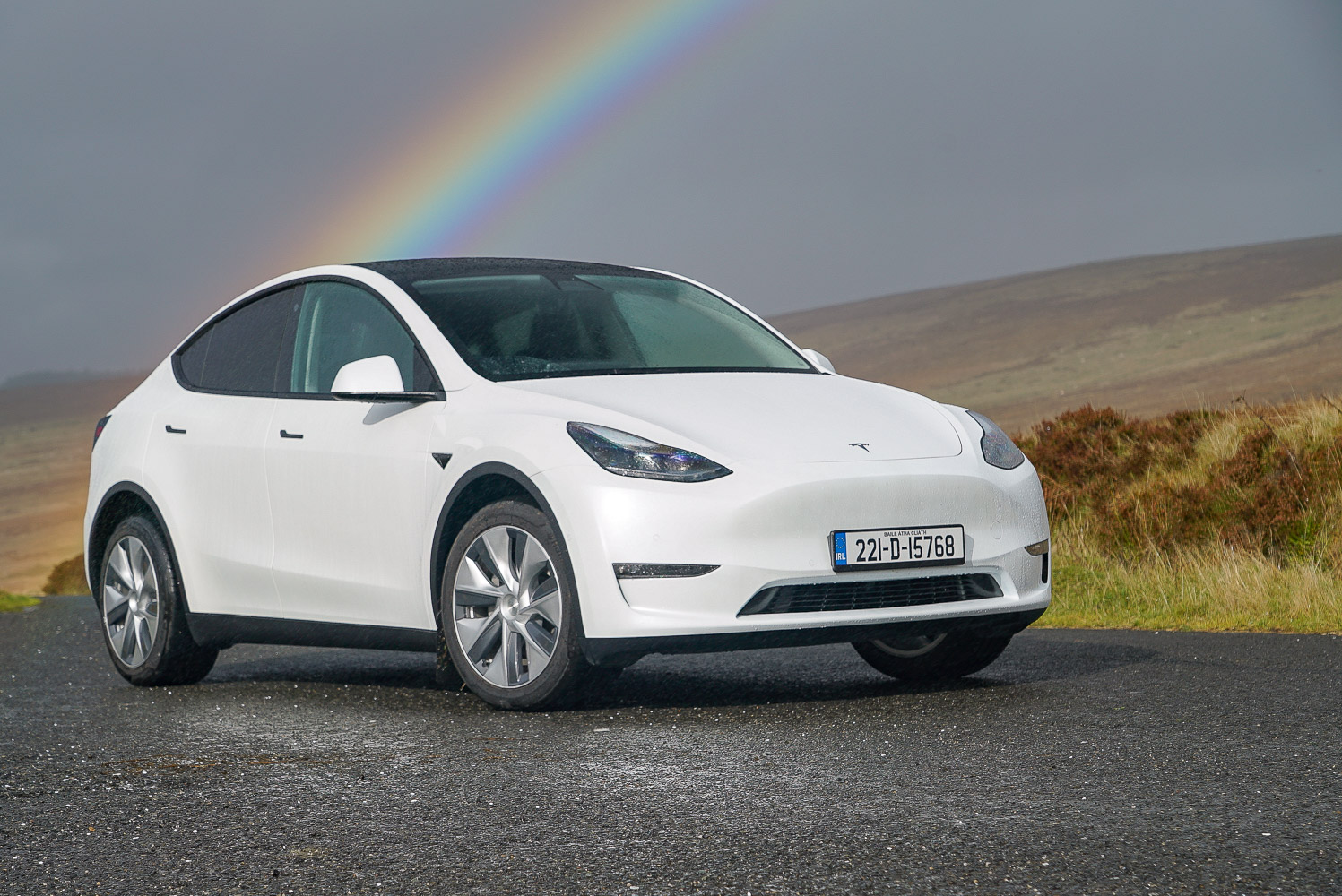(Updated on November 27, 2025 with embedded video clips)
Polestar's model lineup swells to three with the arrival of this new 4. Should buyers of the electric Porsche Macan be going through their drawers to look for the receipt?
In the metal
If anything is going to push Polestar's sales up to the requisite level for it to survive as a standalone brand, then a rapid, swish-looking, yet still practical crossover-coupe ought to be it. Thankfully, then, that's exactly what the new Polestar 4 is. It's a car that's somewhat hard to pigeon-hole - it competes with the likes of the new electric Porsche Macan but is considerably cheaper than the German car. It's low and sleek yet has interior space that's comparable with much larger vehicles (are we finally starting to see the packaging advantages of electric cars?). It's a clean-sheet design, yet one that shares a lot of its underpinnings with the much smaller Volvo EX30.
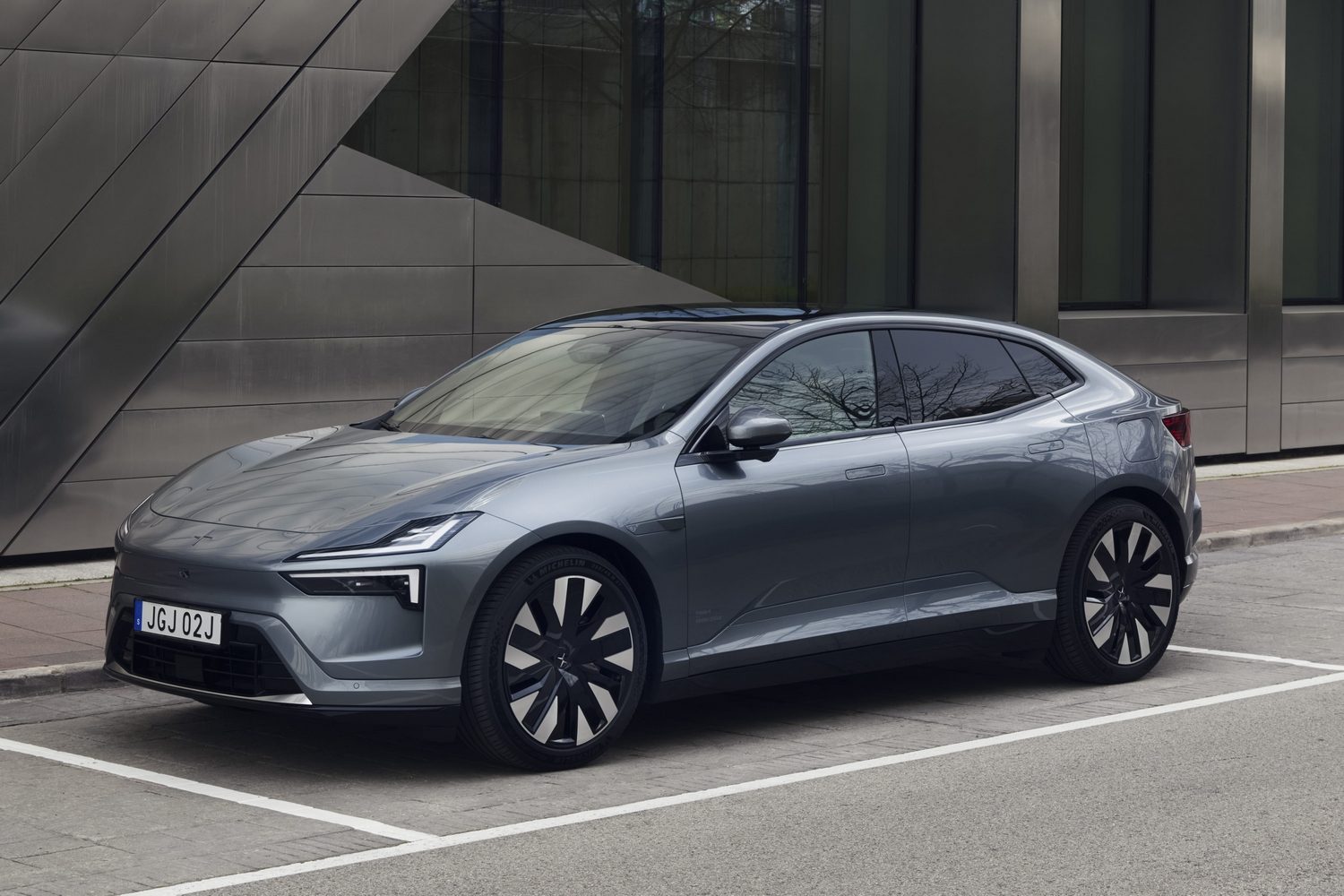
So, what is it? Well, with the raised ride height, it's clearly aimed at reassuring SUV-addled car buyers that, yes, it's still a crossover and most definitely not a boring old saloon. However, Polestar's designers have pulled a fast one, and sucked the 4's roofline way, way down so that it barely comes up to my chest. In order to do this without sacrificing interior space, the designers moved the main rear structure that holds up the roof way, way back.
In fact, that structure now sits behind the heads of the rear seat passengers, but in doing that it has meant that there's no space in the tailgate for a window. Instead, there's a wide-angle camera mounted atop the roof that sends its high-definition images to a digital rear-view 'mirror' inside. This lack of rear glass is the Polestar 4's defining aspect - and is most assuredly not a gimmick, Polestar's team reminded us, but one driven by the conflicting demands of a spacious cabin and a low, aero-friendly roofline.
That low roofline, combined with a sleek nose (which does without the 'smart panel' camera and radar section used by the Polestar 3 SUV and the upcoming Polestar 5) and pert tail section make the Polestar 4 one of the best and most interesting-looking new cars around. The exterior style is pared back and almost unadorned but uses careful management of the volumes and surfaces - and some neat details, such as the arrowhead headlights and the battery and power information stencilled on the front doors - to create a very desirable-looking car indeed.
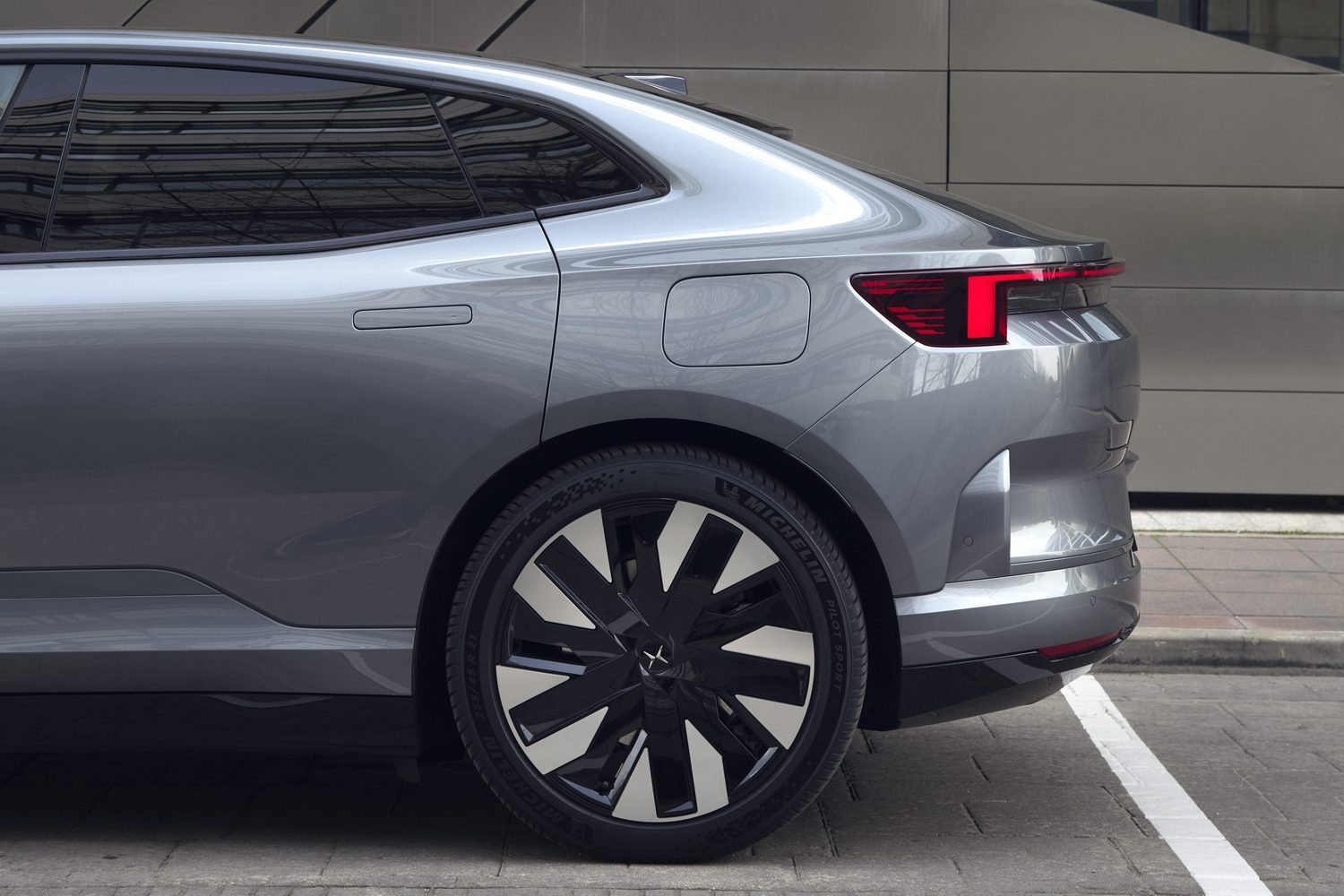
Inside, if anything, it's better again. Let's start in the back, where that rear-biased roof structure has succeeded in liberating sufficient headroom even for six-footers, and by moving the back seats rearwards and down a bit, there's also copious legroom, almost up to Skoda Superb standards. The rear seats also electrically recline a couple of degrees, and because the big glass roof lets in so much light, rear seat passengers will be both very comfortable and will most likely quickly forget about the lack of a rear window.
Anyone driving the Polestar 4 for the first time most certainly won't forget it, however. If you're someone who throws a glance over their shoulder to check blind spots before changing lanes (and you really should be doing this - blind spot monitoring sensors are far from infallible), the lack of a rear screen will always catch your peripheral vision, even when you're expecting it. It's an odd sensation, driving a low-slung car which you know not to be a van, but having no rear window out of which to look.
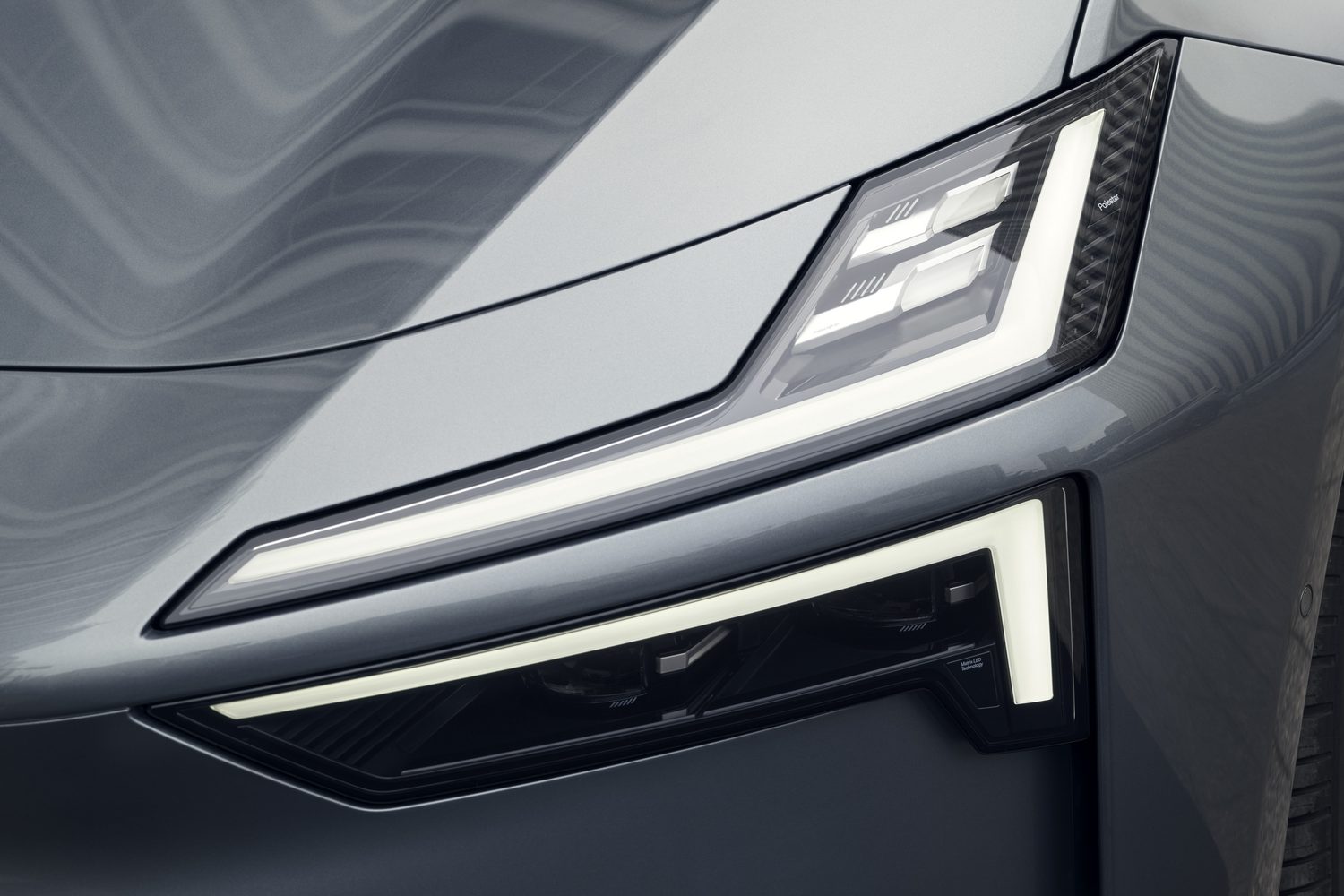
The digital rear-view mirror works well (there's a conventional mirror under the screen if you want to check on your rear passengers) and so too does the 360-degree parking camera system, but not only does it remain a weird feeling to glance behind and see no window, but it also feels less safe when backing up. Perhaps it's something to which we shall adjust.
The rest of the Polestar's cabin is a roaring success. The designers say that the style of the 4's interior has been inspired by athletic wear and running shoes, and the company has developed a new 3D technical weave fabric, rather like that of an expensive Nike or Puma sneaker, which is made from recycled plastics and which feels pleasantly soft to the touch.
Because it's created specifically for each seat, there's no wastage from cutting big sheets of material, and it's part of a dedication to recycled and recyclable materials, as well as the use of renewable energy in the Polestar 4's factory (currently in China, with a second plant planned for South Korea) that allows the company to claim a mere 19 tonnes of emitted CO2 for each finished car, a very low figure by current motor industry standards.
The cabin is light and welcoming, and the levels of quality are very high. Polestar has steered away from traditional premium car cabin materials such as wood veneer or piano black lacquer, and the interior looks all the better as a result, exuding a distinctly Scandinavian cool. If you don't want the sneaker-style knit material, there is a leather option and Polestar has eschewed the trend for so-called 'vegan' leather, pointing out that it's actually just plastic, and therefore of dubious environmental benefit.
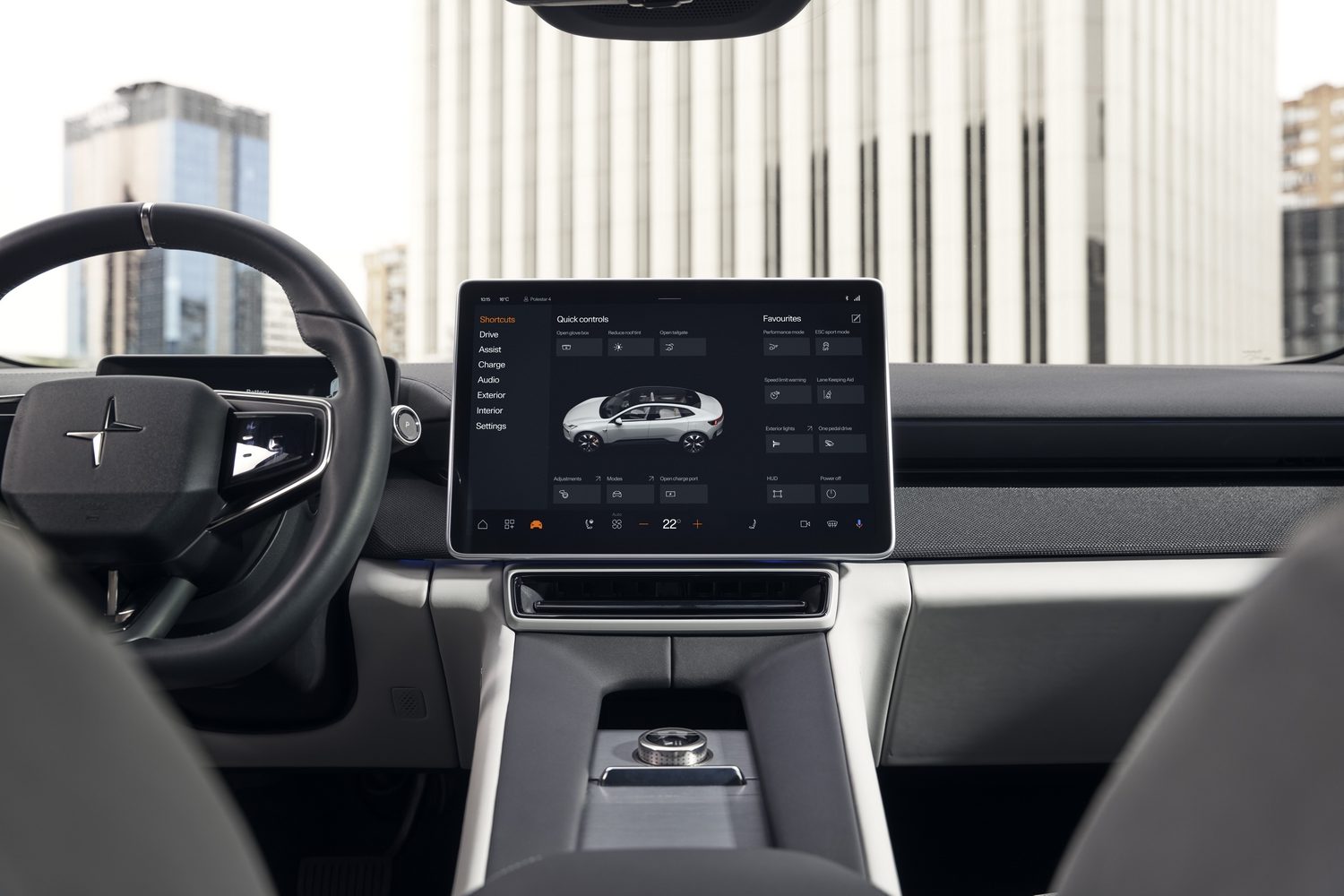
Instead, Polestar sources proper leather from Bridge Of Weir in Scotland and is embarking on something of a debate about the material's sustainability, pointing out that all of the hides are drawn from within a 130km radius, that the factory uses eco-friendly tanning methods and that the hides themselves - drawn from beef cattle - would just go to waste and landfill otherwise. Equally, the leather option is an expensive one, something that Polestar says has been done to make buyers really think about whether or not they want it.
Behind the chunky three-spoke steering wheel is a ten-inch digital instrument panel, which uses Polestar's distinctive and minimalist font for its numbers and letters. This can be configured to display the navigation map too, which is very useful, and there's a comprehensive head-up display as well.
In the centre of the dash is a 15.4-inch infotainment screen which is running the latest iteration of Polestar's software, and that's both good and bad. The bad part is that there's a single, solitary physical control in the cabin (column stalks aside) and that's the tactile rotary controller for stereo volume (governing an ear-assaulting Bowers + Wilkins stereo in our test car) and play/pause buttons.
That's several proper buttons too few, in our estimation (and that of Euro NCAP, increasingly) but the good news is that the digital menus have been simplified and are relatively easy to use. That itself comes with a caveat, though, which is that in our test, some of the time the screen was sluggish to respond, or needed an icon pressed with millimetric precision to elicit that response. Our Polestar 4 was a pre-production model, apparently, and so not quite the finished article, but that is something which definitely needs fixing.
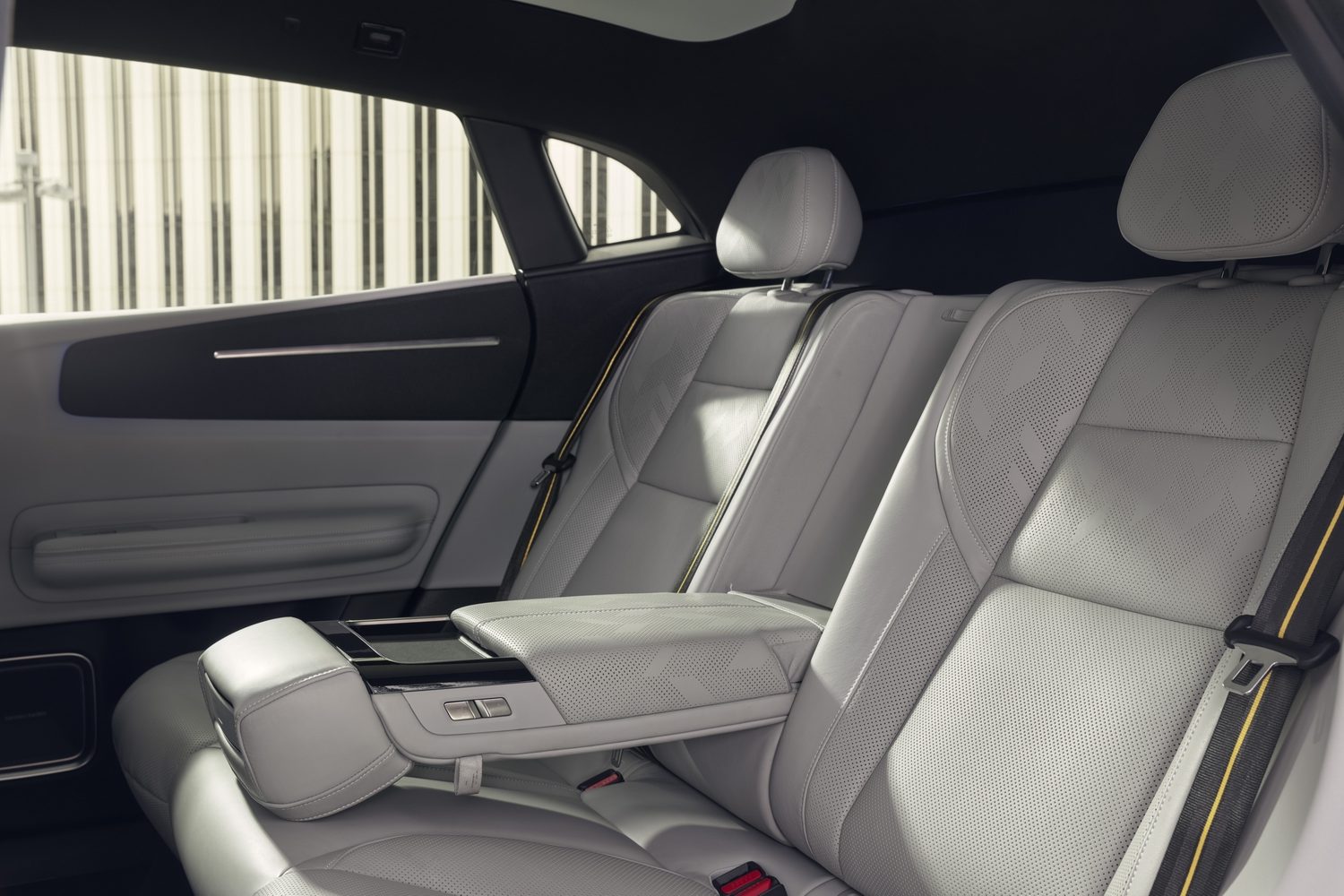
Thankfully, there are good aspects too. The menu layout is easy to find your way around (even though there are a dizzying 3,000 separate screens upon which you can call) and the blocky graphics and customisable areas certainly help. You can click and drag a slider to increase or decrease the amount of screen real estate a particular function occupies, and thankfully Polestar has both kept the climate controls in an 'always-on' position at the base of the screen and given a quick access icon for turning off the always-irritating speed limit reminder if it's giving false information.
There's a nice touch for the ambient lighting, which is altered not through simply picking a colour, but by selecting which planet of our solar system is your favourite. Doing so - swiping between Earth, Mars, Venus, Saturn and inevitably Uranus - changes the interior colour scheme, including the subtle mood lighting that shows through perforated sections on the doors.
The Polestar 4 is practical up front too, with deep door bins, storage in and under the centre console and a reasonable glovebox (albeit you need to open that with the touchscreen...). The boot, at 526 litres, isn't the biggest, but that does include 31 litres of underfloor cable storage and an adjustable boot floor. There's also a small flap which can be opened to allow access through to the main cabin, which is helpful if you're bringing your dog in the boot, but because of the reclining seat mechanism, there's no load-through ski-hatch.
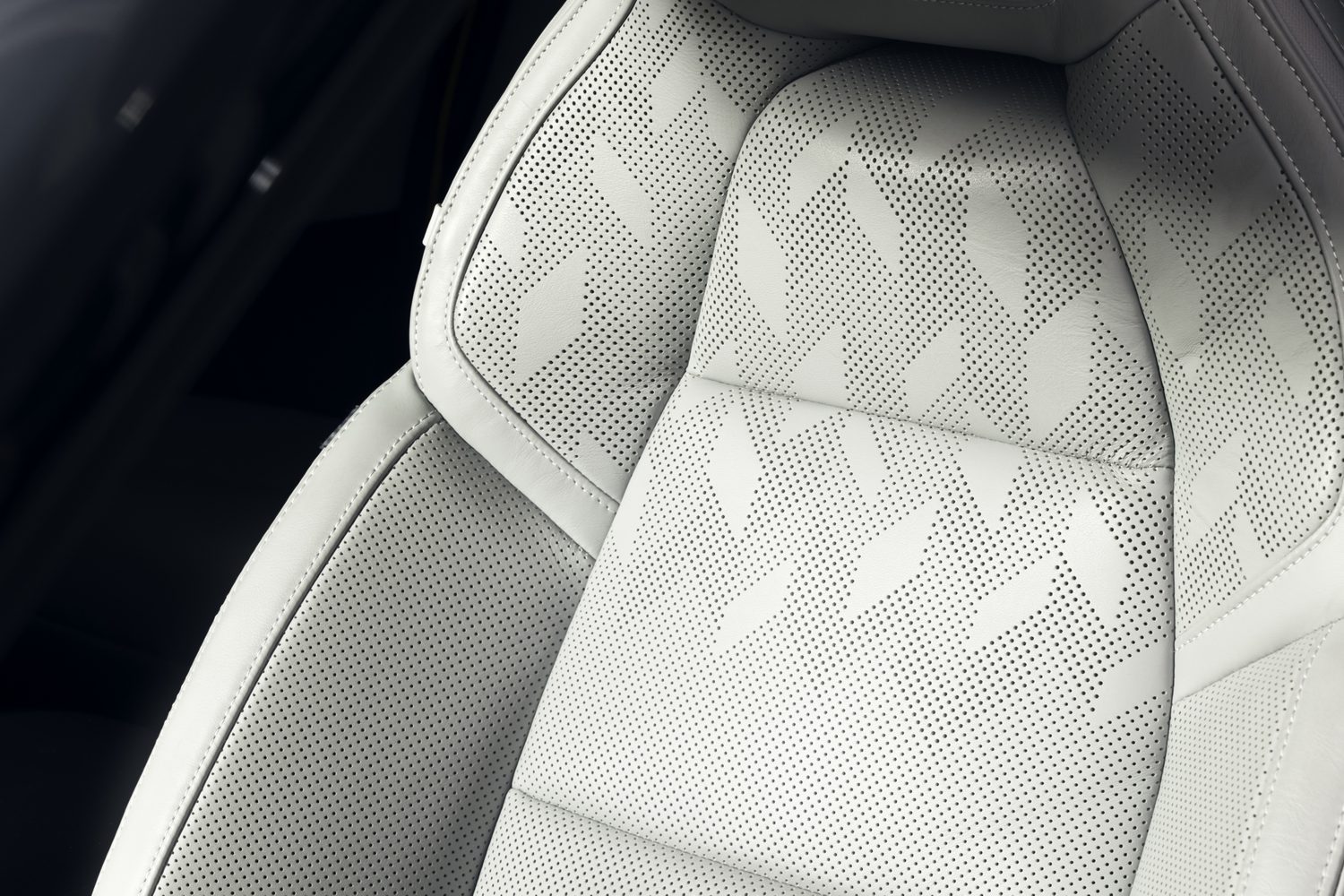
Driving it
The Polestar 4's rear-mounted 272hp electric motor is shared with the Volvo EX30 and the new Smart #1 and #3 as the four cars share components from the Geely Group's SEA system under the skin, even if the Polestar 4 is considerably larger than the other three and packs a much bigger battery.
That holds 94kWh of useable energy and allows this single-motor Polestar 4 a 620km range on one charge according to its official WLTP rating. That's a broadly realistic figure, too, as a day's mixed driving on motorways, city streets and steep, twisting Spanish mountain roads resulted in average energy consumption of 18kWh/100km. That's more than reasonable and should allow you to put at least 500km between charges in real-world driving. As we often notice with Volvo, Polestar and Geely products however, that consumption rate does seem to spike with prolonged motorway running, although we didn't get to spend enough time on multi-lane roads to get an accurate handle on that for now.
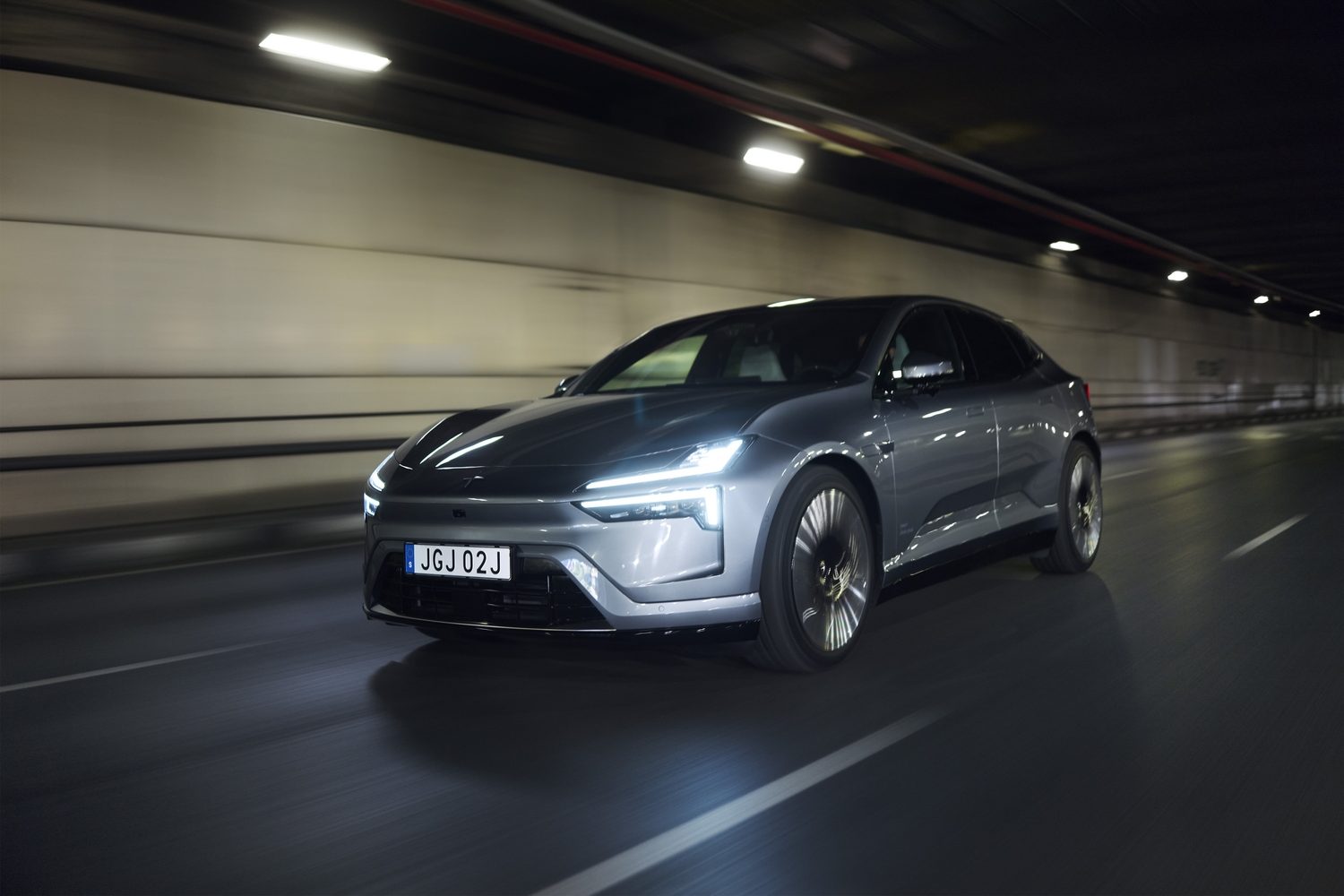
Performance from the electric motor is brisk, but inevitably feels far less so than its explosive two-motor sibling. The Polestar 4 is a much heavier car than the Volvo or Smart models that use this same motor, so it feels less fleet than them, too, although its all-round performance is entirely adequate. C'mon, who really needs 272hp in their big comfortable family car?
Comfortable? Well, sort of. This single-motor Polestar 4 comes with passive (Polestar refers to them as semi-active) suspension dampers rather than the electronically adjustable dampers on the two-motor version, but this is possibly the sweeter of the two chassis tunes, as the stiffer springs of the dual-motor car we drove with the Performance pack fitted induce a bit too much bump and thump on anything less than a perfect surface.
Here, the ride quality is noticeably sweeter, although there is a constant, underlying stiffness which can raise its head at inopportune moments, resulting in sudden jolts coming up through the cabin. Possibly going for the basic 19-inch alloys might help in that regard.
Ride quality aside, the Polestar 4's refinement is exceptional, with a very quiet cabin and hardly any wind noise or tyre roar, so as long as you keep away from big bumps, this should be a very relaxing long-haul car.
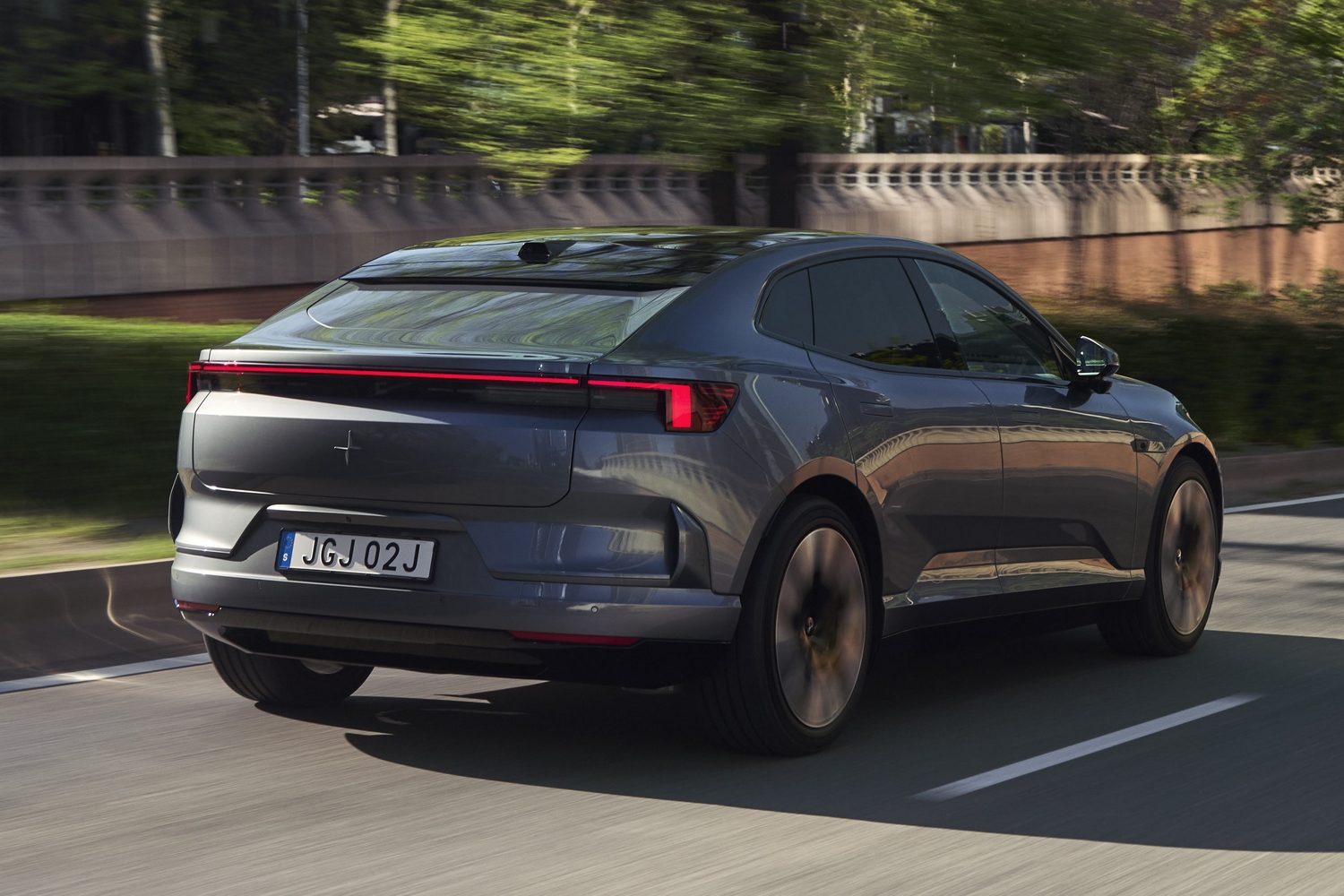
Rather a fun one, too. The well-weighted steering has a rather BMW-like feel to it, which encourages you to take liberties with the Polestar 4 in corners, and it responds very well indeed. In spite of its weight - more than 2.2 tonnes, which makes itself felt in slower, tighter turns - the 4 feels agile and biddable, and more than a little enjoyable. Polestar's head of chassis tuning, Joakim Rydholm spends his weekends thrashing classic and historic rally cars with his friend, Stig Blomqvist (yes, THAT Stig Blomqvist) and his enthusiasm shines through the 4's responses and general sense of eagerness.
There are one or two bum notes, however. The 'one-pedal' regenerative braking feels a bit too grabby in either of its two selectable modes, so is best left off (the brakes are otherwise fab, though, and have excellent feel and handle the transition between regen and physical braking really well), and the rim of the steering wheel is a bit too chunky for our tastes.
What you get for your money
Polestar 4 prices, in Ireland, start from €68,600 for this Long range Single motor model, which pitches it roughly halfway between the Tesla Model Y and the electric Porsche Macan. That feels about right, as the 4 looks and feels much more sophisticated (especially inside) than the Tesla but is not quite so performance-focused as the Porsche (at least, not in this form).
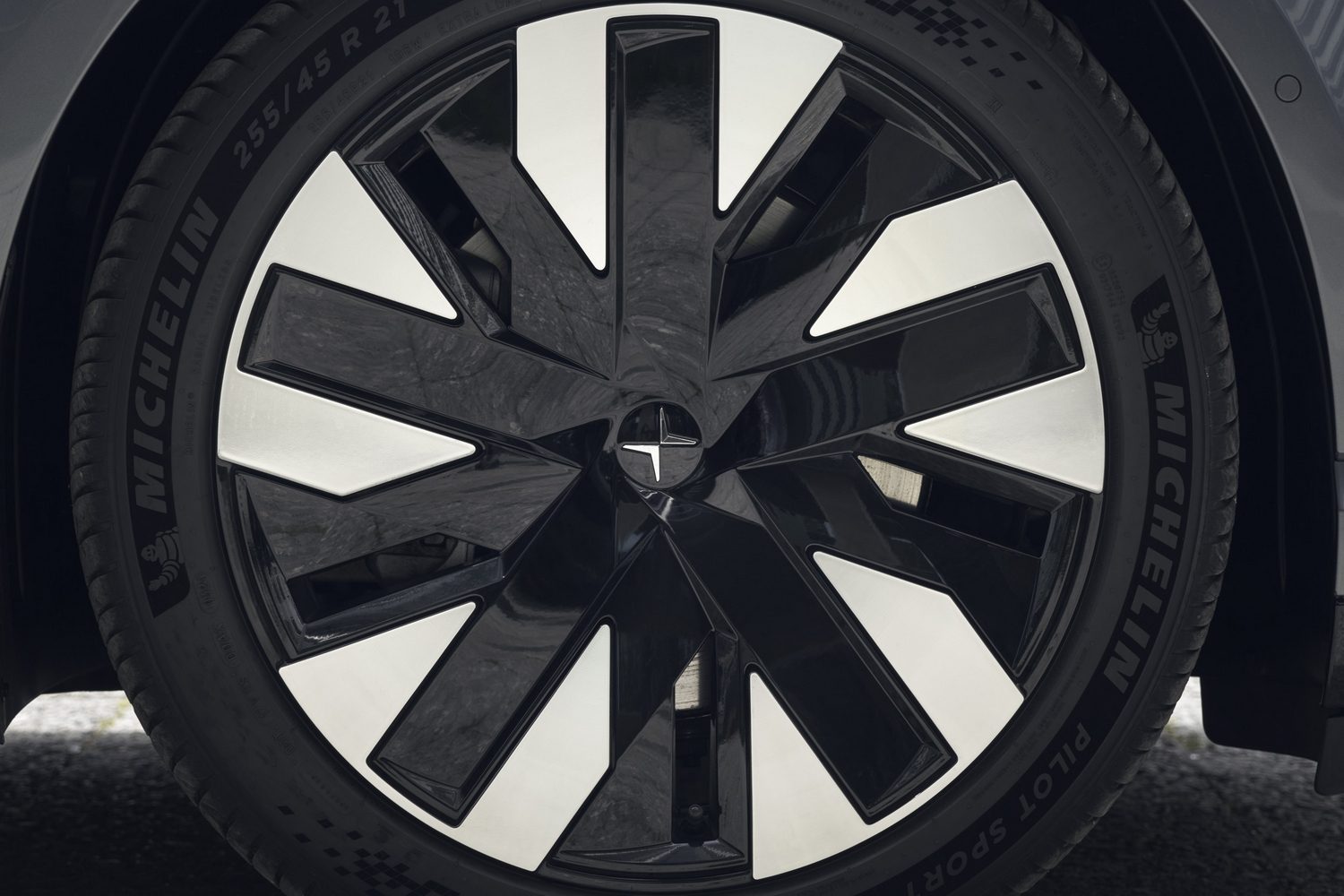
Standard equipment includes bio-friendly micro-tech fabric seats, 20-inch alloy wheels, frameless heated door mirrors, active high-beam headlights, panoramic roof, pop-out flush-fit door handles, eight-way adjustable electric driver's seat (six-way for the passenger) and both are heated, two-zone climate control with parking setting and a pet-protection system, the 15.4-inch touchscreen, and a three-year, 100,000km warranty with a separate eight-year, 160,000km warranty for the battery.
Summary
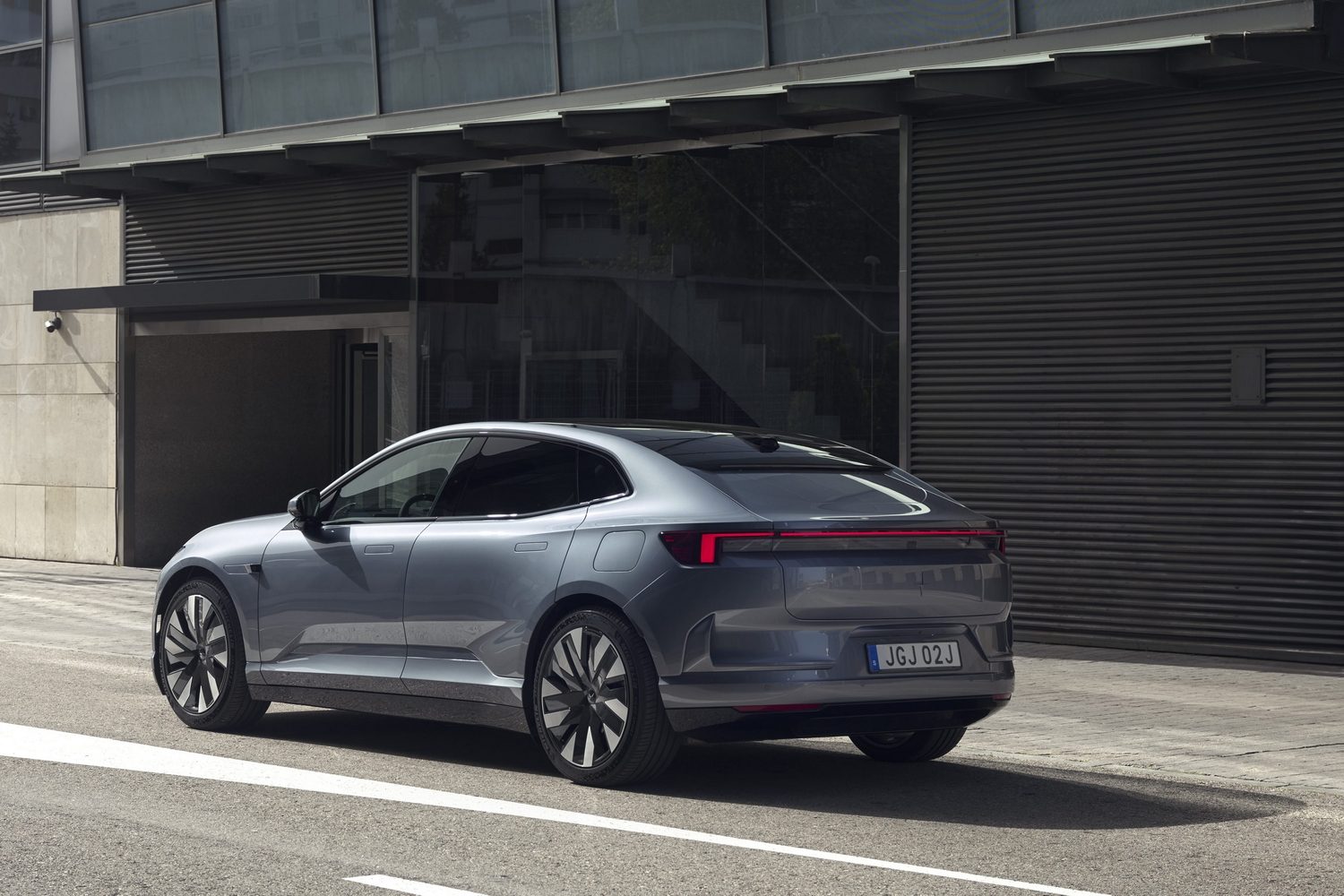
For all that the Polestar 4 is hard to pigeon-hole, it's a car whose charms you can very easily fall. It's certainly one of the best-looking new cars - inside and out - for some time, and its cabin has an excellent blend of quality, space and comfort. The lack of a rear window still feels odd, and probably will do so for some time yet, while the ride quality is mixed, but you can't argue with the Polestar 4's performance and range, nor its deft handling.

